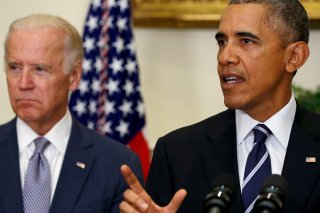Trade Talk Revival: Why Washington Might Reconsider Obama’s Trans-Pacific Partnership
President Donald Trump rejected the partnership, which was renamed the Comprehensive and Progressive Agreement for Trans-Pacific Partnership, but presidential candidate Joe Biden says he is willing to re-look at the trade deal’s potential.
Although 82.8 percent of Mexico's commerce is with the United States, CPTPP countries represent only 5.4 percent of its exports and 10.4 percent of its imports. Having said that, the importance of Asia in Mexico’s trade structure has been growing steadily over the last decade.
During Peña Nieto's administration, Mexico managed part of its relations with Asia within the “MIKTA framework,” which besides Mexico includes Indonesia, South Korea, Turkey, and Australia. Likewise, Mexico participates in multilateral mechanisms such as APEC, FOCALAE, PECC, and has kept diplomatic links with ASEAN. As for Peru and Chile, although the Peruvian Congress has not yet ratified the CPTPP, the country has developed a powerful network of nineteen free-trade agreements with fifty-three nations in the world. More to the point, together with Mexico, Chile, and Colombia, Peru is part of the Pacific Alliance, located in a strategic region which connects the Asia Pacific with the rest of South America and the Caribbean, and, through Mexico, with the United States. In Asia, Peru has subscribed to free trade agreements with Japan, Australia, and Singapore. Among the countries in South America, Peru is perhaps the one that has dealt successfully with the coronavirus pandemic. All of which sets the country in a league of its own when it comes to the potential for growth in the near future. If Peru has been opening its economy over the last few years, then Chile―the other South American member of the CPTPP―is traditionally one of the most open economies in the region. Like Peru, the Chilean Senate has yet to subscribe to the CPTPP multilateral agreement. In another circumstance, Santiago would have already signed the treaty but it had to face a particularly strident social uprising against the neoliberal policies followed by the Piñera administration. Many people in the streets of major Chilean cities blamed free trade for their troubles. Still, it seems that in the end, Chile will become a full-fledged member of the CPTPP.
The terracotta-warriors from the third-century BC all look to the East, for most of the enemies of the Chinese Emperor, Qin Shi Huang, were located in the East. The future of the region will partly depend on whether this geopolitical vision will remain operative. In the meantime, the CPTPP agreement may serve as a cornerstone of a new time to come for the Pacific Rim.
Angel Jaramillo Torres holds a BA in International Relations at El Colegio de México and a PhD in Political Science at the New School for Social Research. He is co-editor of the two-volume series Trump and Political Philosophy (Palgrave Macmillan, 2018). His journalistic work has been published in Spanish and English outlets. He resides in México City.
Image: Reuters

